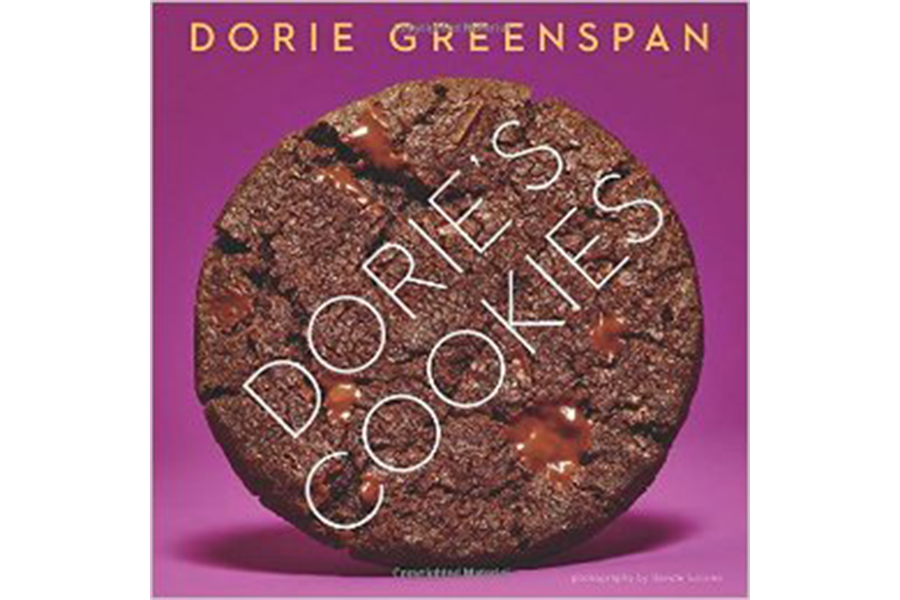'Dorie’s Cookies' couldn’t come at a more propitious moment
Loading...
Need some cheering up? When thoughts turn dark, few things stop the negative spin cycle in your head quite like baking cookies, an inherently upbeat activity that’s absorbing without being taxing. For adventurous bakers eager to go beyond basic brownies and chocolate chips, Dorie Greenspan’s latest trove of deliciousness, Dorie’s Cookies, couldn’t come at a more propitious time. C is for cookie, and also for comfort.
Greenspan already has a devoted following for her earlier cookbooks, including "Around My French Table" and "Baking Chez Moi," as well as the much-celebrated Beurre & Sel (Butter and Salt) pop-up cookie boutique she ran with her son Joshua on New York City’s Lower East Side in 2012-2013. Her books are personable, accessible, authoritative, and impeccable.
"Dorie’s Cookies," with more than 300 recipes spread over 500 pages, is a big, generous volume that includes many enticing offerings, both sweet and savory. It scores high on what I call the cookbook IQ – or Irresistibility Quotient.
This is fortunate, because enticing recipes like White Chocolate and Poppy Seed cookies and Fennel-Orange Shortbreak wedges go far toward offsetting some questionable design decisions. Most unfortunate: ingredients and instructions are rarely on the same page-spread, necessitating a lot of annoying page-turning for bakers. This is in part because of Davide Luciano’s spectacular larger-than-life full-page color photographs. (While most of these extreme closeups are mouthwateringly luscious, a few – including crumb-topped apple bars and raspberry macarons – are as unflattering as selfies.)
Another quibble is with misleading cookie names, such as Lucky Charm cookies, which have nothing to do with the marshmallow breakfast cereal; the far more appealing key ingredient is Italian amaretti. And don’t skip over Greenspan’s addictive cinnamon-sugar and coconut-topped version of Mandelbrot because of their unfamiliar name, Kamish – or her warning that “This is a case in which perfection will be out of reach – accept it.” She’s not kidding: the biscotti-like slices are crazily crumbly. But the fragments are great for nibbling and make a fantastic topping for yogurt or ice cream parfaits.
Although the book offers many unusual creations, Greenspan doesn’t neglect popular favorites. “Recipes for chocolate chip cookies are like scarves – you’re always happy to have a new one,” she comments winningly in the introduction to her current favorite, a chewier version spiced with nutmeg and coriander.
Food historians of the future may well date 2016 recipes by the telltale markers of amped up spices and salt. Princeton Gingersnaps are loaded with crystallized, fresh, and ground ginger, plus a full teaspoon of ground cloves. Leckerli, Greenspan’s delicious version of Swiss spice bars – which are perfect for the holiday season and keep for weeks – intriguingly require no eggs, butter, oil, or salt. But they do feature a perfect mix of cinnamon, nutmeg, cloves, and black pepper studded with almonds and candied orange peel and sweetened with honey and sugar – all of which is spiked with kirsch or Grand Marnier.
Many of Greenspan’s bar cookies involve ingredients and textures associated with Thanksgiving pies – pecans, apples, and sweet potatoes. Other recipes, including her signature Jammers, require not just fruit jams but streusel toppings.
For the most part, these are not the sort of recipes you whip together on a whim and drop by spoonfuls. Ingredients are precisely calibrated by both volume and weight (in grams). Many doughs need to rest or chill for two hours or more before shaping and baking. The procedure for the “perfectly tailored” disks of her Beurre & Sel collection is particularly painstaking, requiring rolling, chilling, cutting, and then baking in either special metal rings or muffin tins to assure “beautifully straight sides.”
For those who prize ease over uniformity, rolling the dough into logs to be sliced-and-baked as needed turns out delicious Espresso Chocolate Sablés and World Peace Cookies, (based on Pierre Hermé’s Chocolate Sablés. Sablés are French shortbread.) Logs would probably also work for savory cocktail offerings like Rosemary Parm Cookies and Sesame Sea-Salt Cookies.
Greenspan recognizes that home bakers are often driven by alternating waves of nostalgia and yearnings for novelty. At the more unusual end of the scale are two cocktail cookies I’m looking forward to trying: Bee’s Sneeze Nuggets, named after a gin drink, and Major Grey’s Rollups – like rugelach with Major Grey’s chutney.
In the nostalgia department, it’s hard to resist her recreation of a discontinued Pepperidge Farm classic, the golden-edged Biarritz. She comments, “Like the originals, my barely sweet cookies are made with a mixture of almond flour, sugar and flour” and finished with a “chocolate slick” on their flat bottoms – or, even better, sandwiched together.
In these uncertain times, one thing’s for sure: any of these fabulous treats will brighten a day – or a holiday cookie tray.
A frequent contributor to The Christian Science Monitor, Heller McAlpin also reviews books regularly for NPR.org, The Washington Post, San Francisco Chronicle, and The Barnes & Noble Review.








